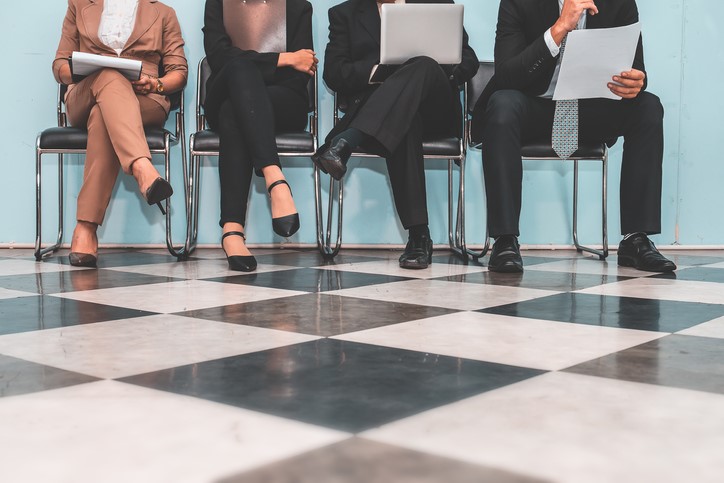
10 steps to making volunteer board meetings more productive
Productive board meetings can help build confidence, pride, and accomplishment within your board. They’re the kind of meetings that make board members feel good about how they’ve spent their time.
Unfortunately, board members don’t always leave board meetings with a smile. What can you do to ensure your board meetings are productive?
You can’t solve a problem without first knowing what it is or at least what is contributing to it. With that in mind, you first need to recognise the issues that are making your board meetings unproductive. Only then can you take the proper steps to ensure board meetings are productive and successful.
To help keep your board on a productive path, we’ll review the challenges causing it to lose its focus and share 10 steps to making your nonprofit board meetings even more productive.
What are the pain points that lead to unproductive board meetings?
If you were to ask a board member from any nonprofit what challenges they face in board meetings, you’re likely to get one or more of the following responses.
“We never get the board meeting agenda enough time to review it before the meeting. Sometimes we are seeing it for the first time when the board chair slides it in front of us as we take our seats.”
It seems like a no-brainer to ensure that board members get the agenda in enough time before the meeting to review it and have an opportunity to recommend additional items if they choose. Unfortunately, that doesn’t always happen. It wastes board time to add new items during the meeting, or new items could be passed over entirely.
“Our board meetings never start on time and regularly extend past our scheduled time limit.”
Anyone can be late once in a while, but the problem occurs when one or more people are historically late. If you wait for all board members to arrive, you risk having your board meetings start later and later, which will also cause your ending time to run over.
“Our board chair isn’t good at keeping our meetings focused and on track.”
An unskilled board chair may allow discussions to fall off track and go down a rabbit hole. When the chair can’t keep discussions focused, boards spend too much time on individual agenda items. A weak board chair may also allow board members to bring up issues that are not listed on the agenda, causing the board to table essential items until the next meeting.
“Our meetings are too casual to accomplish anything, and there don’t seem to be any rules.”
The most common structure for board meeting protocols is Robert’s Rules of Order. Since nonprofit boards are served by volunteers that have an inherent passion for the nonprofit’s cause, they may not be versed in parliamentary procedure, causing meetings to feel disorderly.
“One or two people monopolise the entire meeting, and I never have an opportunity to provide input.”
This is also a consequence of the board chair not actively facilitating the meeting. Everyone in the meeting should be encouraged to participate in discussions and have their opinions heard.
“Our board members don’t prepare well enough for meetings; they just show up.”
A huge problem for many nonprofits is rehashing the same issues at every board meeting. This happens for two reasons — when board members have left the previous meeting without clearly understanding what actions they were supposed to take or when board members are aware of the action items they were responsible for and didn’t follow through.
If these issues sound familiar to you, take heart. There are specific steps your board can take to make your meetings more productive.
For busy nonprofits, the pre-meeting phase often becomes a source of anxiety, long days, missed deadlines, and stress. Streamline — and revolutionise — the process of preparation, collaboration, and review and free up valuable time and resources for your organization’s critical work. Download our effective board meetings one-pager to find out how to tame the meeting cycle, take back your time and transform your organisation’s governance and leadership.
———————————————————————————————–
10 steps to making nonprofit board meetings more productive
1. Focus on character during board member recruitment
Dr. Debra Brown and David Brown, co-authors of Governance Solutions, teach, “Recruit for character, train for competence.” The idea is you can educate board members to be competent, but you can’t change their character.
2. Ensure the board chair has good facilitation skills
Some nonprofit boards ask board members to take turns running meetings to help each member develop their skills. Others enlist the help of a mentor who has good meeting facilitation skills.
3. Limit the time spent reviewing old business
A brief recap of old business items is all that’s necessary.
4. Place the most important agenda items at the top
If you don’t get to the rest of the items, you can always table them until the next meeting.
5. Send out the meeting agenda and packet at least five days before the meeting
This step will allow board members ample time to request additional agenda items and ensure they are prepared to give their reports and participate in a meaningful way. BoardEffect makes the work of creating meeting agendas and board packets easy and efficient.
6. Implement a consent agenda
A consent agenda will enable your board to approve routine items where no discussion is required quickly.
7. Be realistic about timeframes
If your board regularly can’t get through the entire agenda, you might consider lengthening the meeting time or adding additional meetings.
8. Set time limits for each agenda item
List the timeframes for discussing each agenda item on the agenda. Board members will be more inclined to keep their comments brief and to the point. Assign a timekeeper who is not serving as board chair or secretary to enforce time limits.
9. Educate the board on parliamentary procedure
Board members who are unfamiliar with parliamentary procedure will benefit from training but they can learn much about parliamentary procedure just by observing. To further their knowledge, consider taking a few minutes during each meeting to familiarise board members with parliamentary rules or arrange for education in another setting.
10. Evaluate your board meeting productiveness as part of your annual board self-evaluation process
Your board can do your board self-evaluations efficiently using BoardEffect’s survey feature.
How will you know when your board meetings are productive?
- Your board members arrived on time and were prepared to fully engage.
- No one complained that they got the agenda or board packet too late.
- Your board members all received timely updates before the meeting started.
- The agenda was clear on which items were for approval and which were for discussion, and the timekeeper ensured everyone abided by the time limits for each item.
- At the end of the meeting, board members left with clarity on what they needed to do before the next meeting.
None of these steps for productive board meetings are difficult or time-consuming. All you need to do is gradually start incorporating them into your meeting protocols. Using a board management solution such as BoardEffect will also help ensure your meetings are streamlined and productive.
BoardEffect is designed with the unique needs of volunteer boards in mind. Our board management software streamlines board processes, enhances communication and promotes accountability, helping you to become an efficient and effective board.
To learn more about how a BoardEffect board management system can serve your mission-driven organisation and support your governance best practices, request a demo today.







